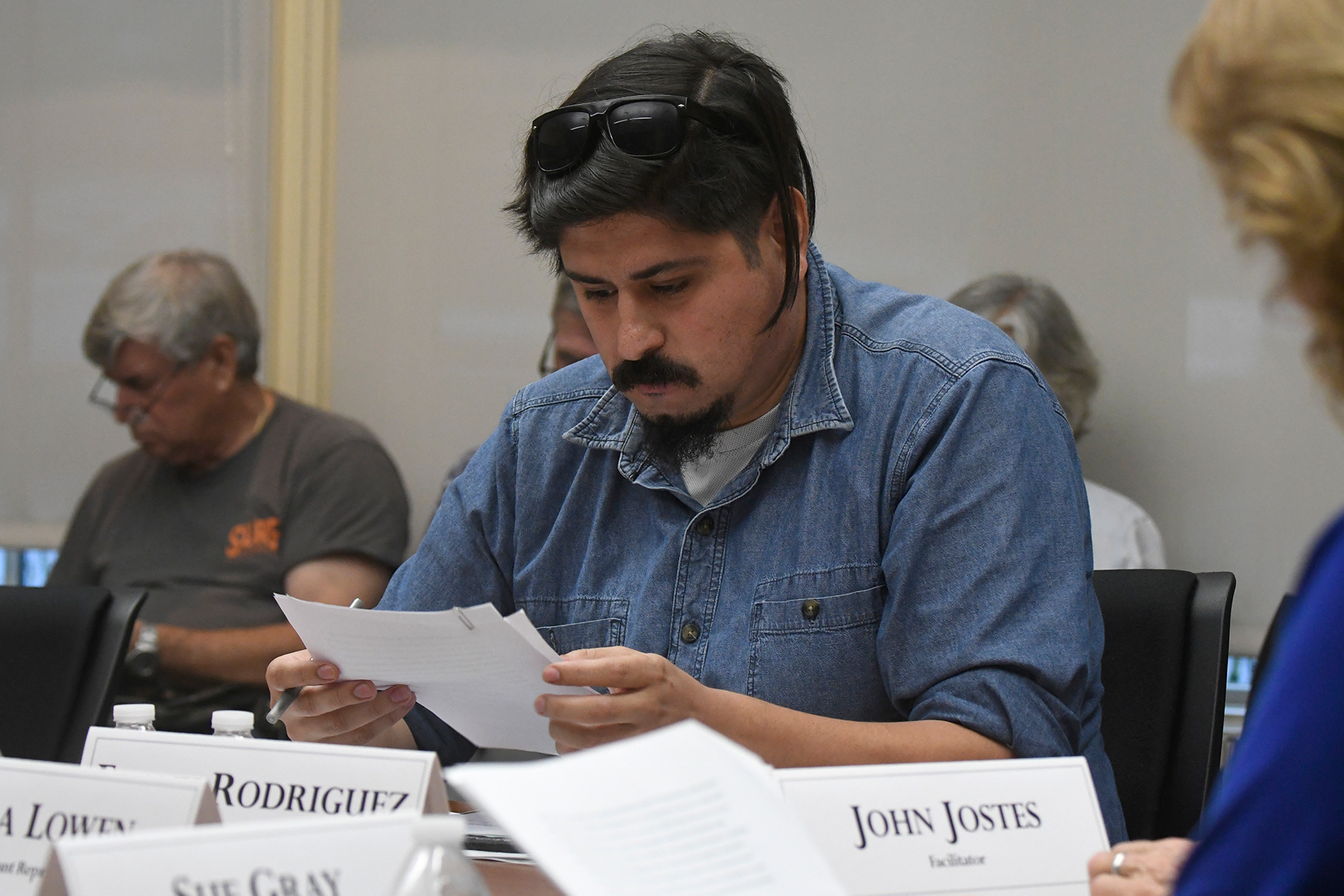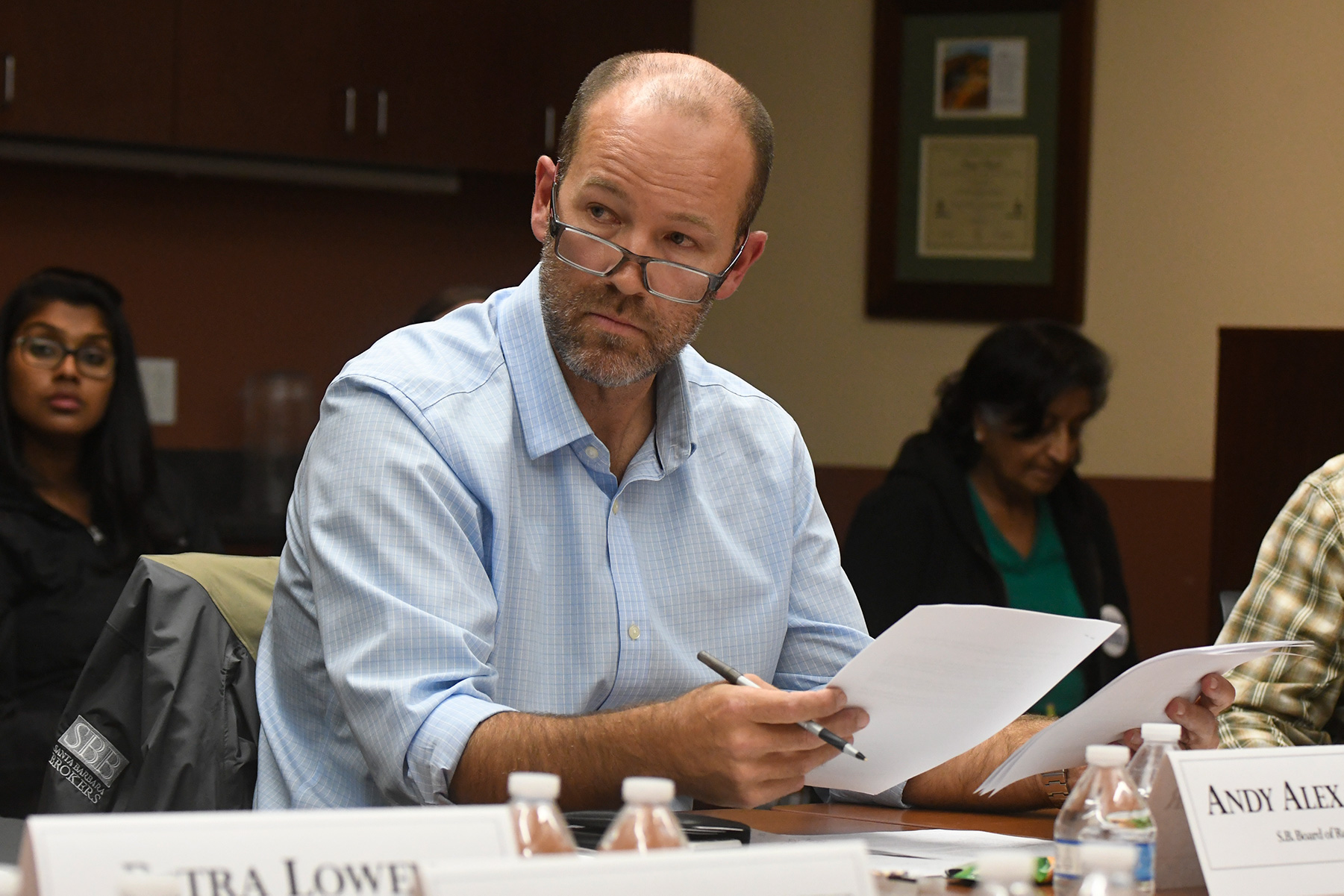Santa Barbara Landlords, Tenants Reach Hard-Fought Compromise
Task Force Recommends Mandatory Leases, but Stops Short of Just-Cause Eviction

Political compromise, like beauty, lies very much in the eye of the beholder. That was made excruciatingly clear late last week, when a special task force made up of landlord and tenant representatives voted in favor of a handful of measures designed to provide greater protection to renters living in the City of Santa Barbara. Although the final vote was unanimous, there’s still deep disagreement among the factions about just how much the landlords gave up and how much the tenants stand to gain.
“You’re getting a lot out of us,” complained Tommy Thompson with the California Apartment Association. “You’re getting a lot.” Thompson, a squarely built political professional with a jocular sense of humor and pragmatic bent, was directing his remarks at Frank Rodriguez, a professional community organizer with CAUSE (Central Coast Alliance United for a Sustainable Economy) and the chief advocate at the bargaining table for tenants’ rights. What Rodriguez really wanted from the process was a “just-cause eviction” ordinance. He definitely didn’t get one. “You can still get evicted under this language,” Rodriguez protested. “When I go back to my leaders and they ask, ‘Are we going to get protection?’ the answer is no.”

The underlying problem, according to Rodriguez, is gentrification. Late last year, several large apartment complexes on the city’s Westside, Ivy Apartment Homes, were bought by Ventura Investment Company out of Camarillo; rents went way up, and large numbers of low-income Latino families were suddenly displaced. Just cause, Rodriguez has argued, would give tenants in the same boat a modicum of protection against such market forces. Such ordinances limit the reasons for which landlords can evict their tenants to specific, definable causes, such as failure to pay rent. They exist in 18 California cities, often accompanied by rent control. To landlords, both are fighting words. As to the broader issue, landlord representatives on the task force have been quick to dismiss such mass evictions as statistical anomalies. The real facts, they insisted, did not show this was a widespread problem.
The landlords were, however, willing to make certain concessions. They agreed, for example, to a proposal that would require property owners to pay relocation costs (three months’ rent or $5,000, whichever is higher) when larger apartment complexes (15 units or more) were involved in an eviction. With no consensus possible on just cause, Rodriguez and landlord representative Laura Bode — of the Santa Barbara Rental Property Association — met one-on-one to see if anything else could be hashed out. Out of their exertions emerged the ungainly named Joint Protection & Accountability Initiative.
Translated into plain English, this initiative would require landlords to offer their tenants a one-year lease. In addition, it would require that landlords sit down with their tenants at a “conciliation meeting” if for some reason that one-year lease is not renewed upon its expiration. Nothing coming out of those conciliation meetings, however, would be binding. Landlord representative Andy Alexander, president-elect of the Santa Barbara Association of Realtors, termed the initiative “just cause without teeth.”
When task-force meetings began late this summer, the landlords unanimously rejected a mandatory lease proposal; so polarized were the two camps. Alexander said his membership opposed such a requirement in principle; it infringed upon the owners’ property rights and made it harder to evict problem tenants. But as negotiations wore on into the late fall, during the election of a more liberal-leaning city council, the landlord representatives began speaking openly about the tactical need to make some concessions. “I’m not okay with it,” exclaimed Thompson. “But I understand reality; the council just changed over. We have to give something. I’m willing to give this.”

Clearly, that wasn’t enough for Rodriguez, who repeatedly noted how the initiative “was not just-cause eviction.” He was not alone. Jerry Morales with the Housing Authority of the City of Santa Barbara represented the tenants’ viewpoint even though he owns four rental units. Just cause protects tenants from discriminatory evictions, he argued. The Housing Authority — which owns 1,200 rental units and works with private landlords to rent out another 2,300 under the federal Section 8 housing voucher program — requires written notice and explanation for all evictions, whether for lease-violations or other reasons. For non-lease-violation evictions, he said, this proviso gives tenants more time when they get the boot. Under city law, he said, landlords have to give 30- to 60-day notice to tenants. By contrast, the Housing Authority requires 90-day notice.
For every story Morales had about tenants being unfairly evicted — a kid with cancer being one — Thompson said he could match him with landlord horror stories about tenants from hell. “From a landlord point of view, this goes really far,” he said of the initiative.
It was Rodriguez who triggered the chain of events giving rise to the task force in the first place. Early this year, he asked the City Council to address the issue of tenant protections. At the time, his organization, CAUSE, was collecting signatures on behalf of a just-cause eviction ordinance. He decidedly did not ask that rent control be included. That, he recognized, was beyond the pale of political possibility. A few councilmembers threw in some suggestions, as did City Attorney Ariel Calonne. In the interest of being comprehensive, Calonne suggested rent control be included. Calonne — then in the midst of protracted legal warfare with accused slumlord Dario Pini — also sought a mandatory health and safety inspection program for all rental units.
It would be Calonne’s suggestions — rent control and mandatory paid inspections — that galvanized Santa Barbara landlords into action. When the council first deliberated on the options this March, the landlords showed up in such numbers — and so early — that when Rodriguez and other tenants’ rights supporters entered the council chambers, there were no seats left. It was an impressive display of political muscle.
The councilmembers responded by authorizing the creation of a task force. To help these adversaries sort things out, city housing planners hired former planning commissioner and retired professional mediator John Jostes to facilitate. Rent control, the councilmembers made clear, was not on the table. Five meetings were initially scheduled; seven, ultimately, would take place. The meetings were bumpy from the outset. Landlords disputed that mass evictions were a widespread problem; they disputed that the vacancy rate was as low as city planners said it was. If there were no factual basis to the alleged problems, they demanded, what kind of solutions could possibly fit?
Later, landlords would take issue with Jostes himself, accusing him of pushing a preordained agenda rather than allowing the two sides to discuss things out as the council suggested. Likewise, they charged Jostes with encouraging a backdoor version of rent control. All sides seemed to support the idea of enhanced mediation; no one knew what that meant. Jostes noted other cities required mediation when landlords sought rent increases above a certain percent. What was that, the landlords demanded, but rent control?

Chuck Eckert, a prominent Isla Vista landlord and member of the Santa Barbara Rental Property Association board, said he’d advocate his board be withdrawn from the task force unless “drastic changes” were made. The board’s rep, Bode, stayed. If difficulty were ranked on a scale from one to ten, Jostes said, the task-force facilitation would rate an eight.
The landlords effectively beat back City Attorney Calonne’s mandatory inspection proposal; instead, the task force opted for something vaguely more proactive than the city’s current inspection-upon-complaint approach. Landlords with enforcement histories would be targeted for follow-up inspections; so, too, might landlords who failed to fill out a voluntary questionnaire as to the health and sanitary conditions of their properties. How these expanded inspections would be paid for remained unsettled. Joining with the landlords was Morales of the Housing Authority.
What happens next remains anyone’s guess. “It’s not a done deal by any means,” said facilitator Jostes. Both sides now have to take the final package and sell it to their respective memberships. Then, on January 30, 2018, the new City Council is scheduled to hear it for the first time. Whether the deal goes far enough for the new council remains to be seen. It could prove too much for some of the landlord groups in town and not enough for social justice advocates like CAUSE.
“When you get too far out in front of your troops, you look like the enemy,” said Jostes. “And you get shot at.” After the 6-0 vote in favor of the package, Jostes announced this was his last facilitation. “I’m done,” he declared. Thompson joked with the Association of Realtors’ rep, Alexander, “You may not be a Realtor after this.” Summing up the work of his last task force, Jostes said, “Everybody gave as much as they could possibly give.”



